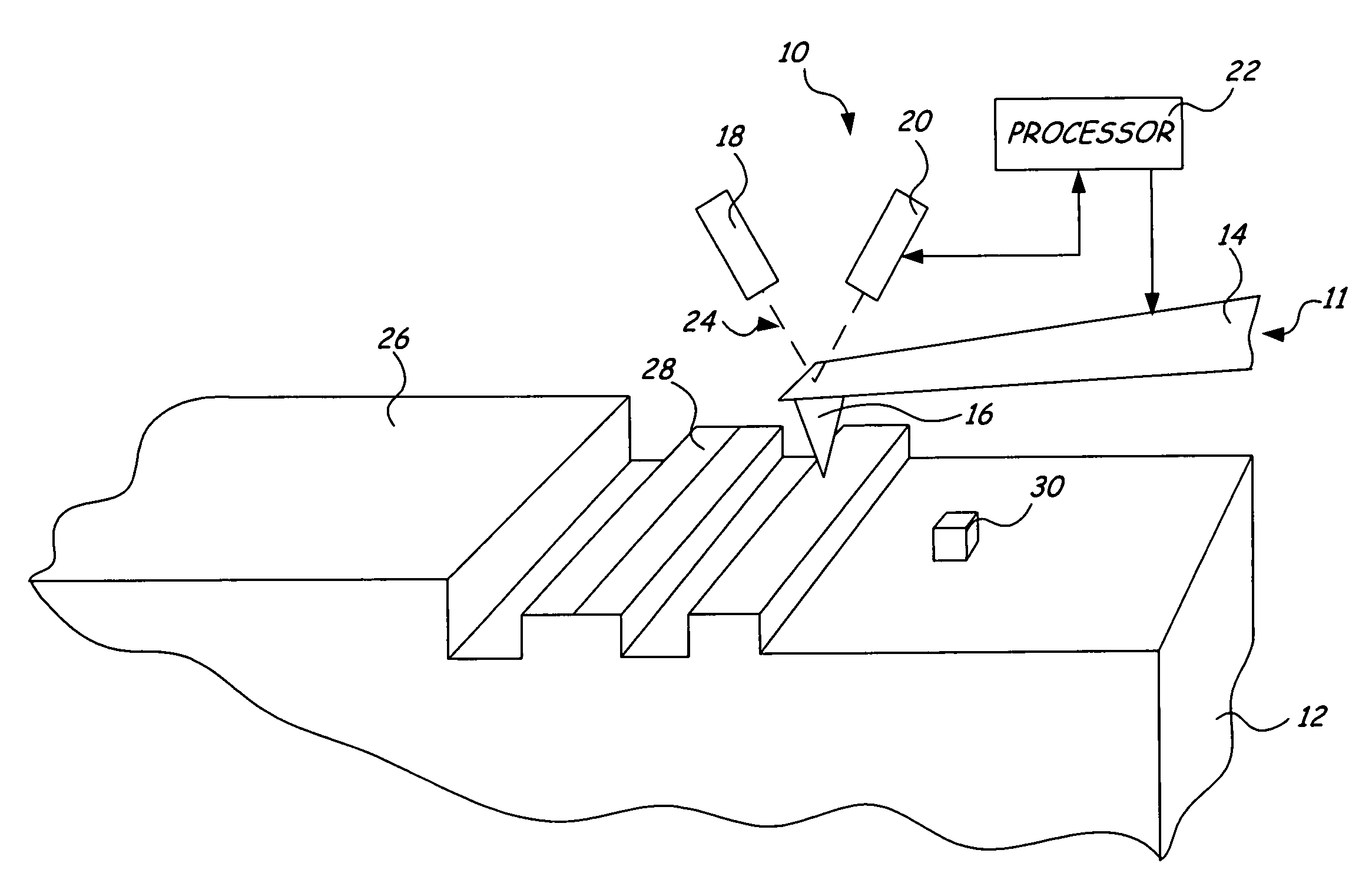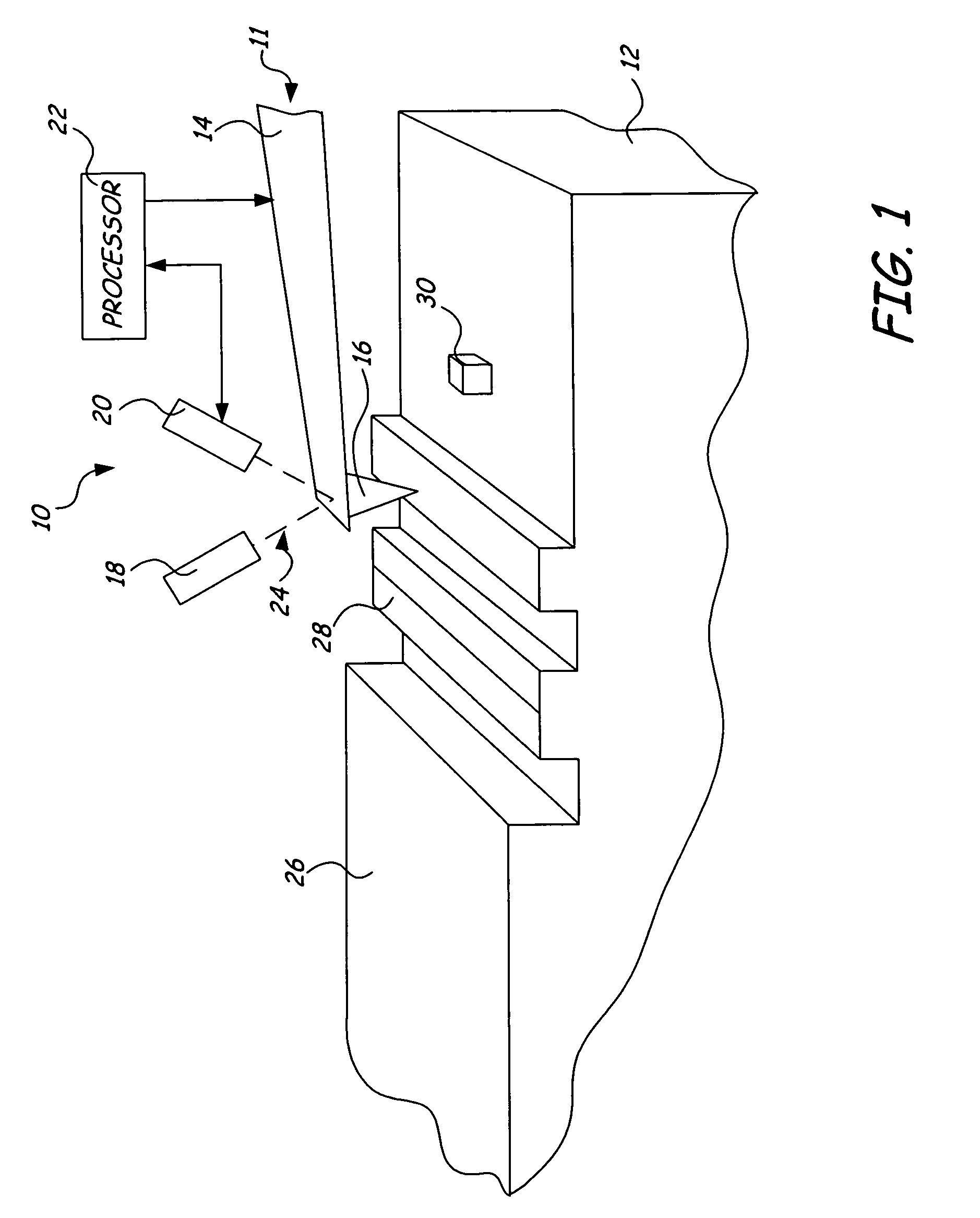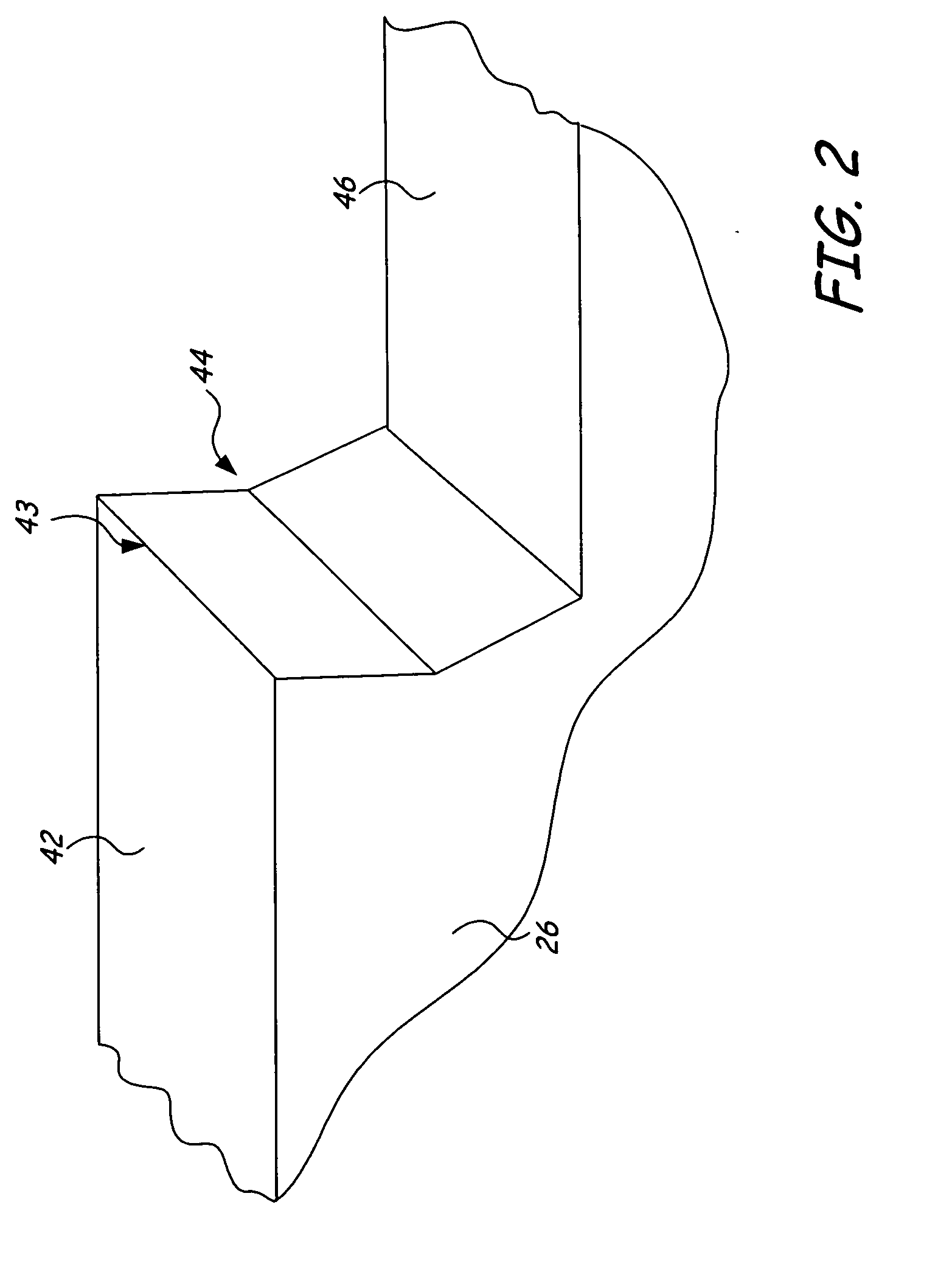Atomic force microscopy scanning and image processing
a scanning and image processing technology, applied in the field of scanning probe microscopy, can solve the problems of reducing the scan speed, affecting the measurement throughput, and affecting the relative size and position of features within the structure, and achieve the effect of correcting skew and til
- Summary
- Abstract
- Description
- Claims
- Application Information
AI Technical Summary
Benefits of technology
Problems solved by technology
Method used
Image
Examples
Embodiment Construction
[0018]FIG. 1 is a perspective view an atomic force microscope 10 positioned over a surface of structure 12. Atomic force microscope 10 includes probe 11 having cantilever portion 14 and tip portion 16. Atomic force microscope 10 also includes light source 18, position sensitive detector 20, and processor 22. Light source 18 emits a beam 24 that is reflected by cantilever 14 and received by position sensitive detector 20. Processor 22 receives signals from position sensitive detector 20 and provides signals to control movement of probe 11 relative to structure 12.
[0019] Structure 12 is the pole tip region of a magnetic recording system, including slider 26 carrying reader structure 28 and writer structure 30. The atomic force microscopy (AFM) techniques described herein are useful for measuring and imaging feature characteristics of structure 12, such as pole tip recession (PTR) features of reader structure 28 and writer structure 30. It should be noted that structure 12 is shown me...
PUM
 Login to View More
Login to View More Abstract
Description
Claims
Application Information
 Login to View More
Login to View More - R&D
- Intellectual Property
- Life Sciences
- Materials
- Tech Scout
- Unparalleled Data Quality
- Higher Quality Content
- 60% Fewer Hallucinations
Browse by: Latest US Patents, China's latest patents, Technical Efficacy Thesaurus, Application Domain, Technology Topic, Popular Technical Reports.
© 2025 PatSnap. All rights reserved.Legal|Privacy policy|Modern Slavery Act Transparency Statement|Sitemap|About US| Contact US: help@patsnap.com



